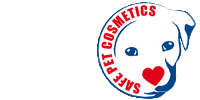PRINCIPLES
The principle of the Disciplinary to ensure the safety and welfare of animals is to adapt the current legislation on cosmetic products for human (according to Reg. 1223/2009) to the specific needs of the animals, so as to achieve a level of security similar and comparable.
So, it prompted the application of the following articles of the Regulation 1223/2009:
Art.1: Scope and objective
Art.2: Definitions
Art.3: Security
Art.4: Responsible Person
Art.5: Obligations of the Responsible Person
Art.8: Good Manufacturing Practice
Art.10: Safety Assessment
Art.11: Product Information File, PIF
Art.14: Restrictions for substances listed in the Annexes
Art.15: Substances classified as CMR (carcinogenic, mutagenic, toxic for reproduction)
Art.16: Nanomaterials (except for the obligation of notification in the database CPNP)
Art.17: Traces of prohibited substances
Art.18: Animal testing
Art.19: Labelling
Art.20: Product claims – Annex I: Cosmetic Product Safety Report
4.2 Additions and changes to the Regulation CE 1223/2009:
In all cases in which it is mentioned human health, according to the guideline means the health of the animal.
Art.3: The products must be safe for the health of the animal
Art.4: In the case of cosmetic for animals, it should be designated the Responsible Person according to the same principles and requirements of Reg.1223/2009: a unique referent, European, indicated on the label and in possession of all the necessary requirements to ensure compliance with Articles indicated in Art. 5 (in particular the control of the production). In the case of this disciplinary, the Responsible Person will be dispensed from the obligations towards the health authorities, and will undertake to carry out similar actions at the Body of Control (adverse event reporting, cooperation, willingness to put in evidence its compliance).
Art.5: Obligations of the Responsible Person. In all cases where the Responsible Person, according to Reg. 1223/2009, must inform the health authorities, according to this disciplinary, will have to communicate with the Body of Control.
Article 10 paragraph 2 and Annex I: Safety Assessment
The safety assessment of cosmetic products will have to consider aspects of the toxicity and harmfulness towards animals to which the product is intended.
Art. 23: Informations on unespected effect and severe unespected effect. The company will implement a program of surveillance and must report to the Body of Control significant adverse events, updating also the Product Information File.
In Annex I (Cosmetic Product Safety Report), Part B, section 4, will be described how and with what tools the Security Assessor will evaluate the safety for the animal.


 Italiano
Italiano